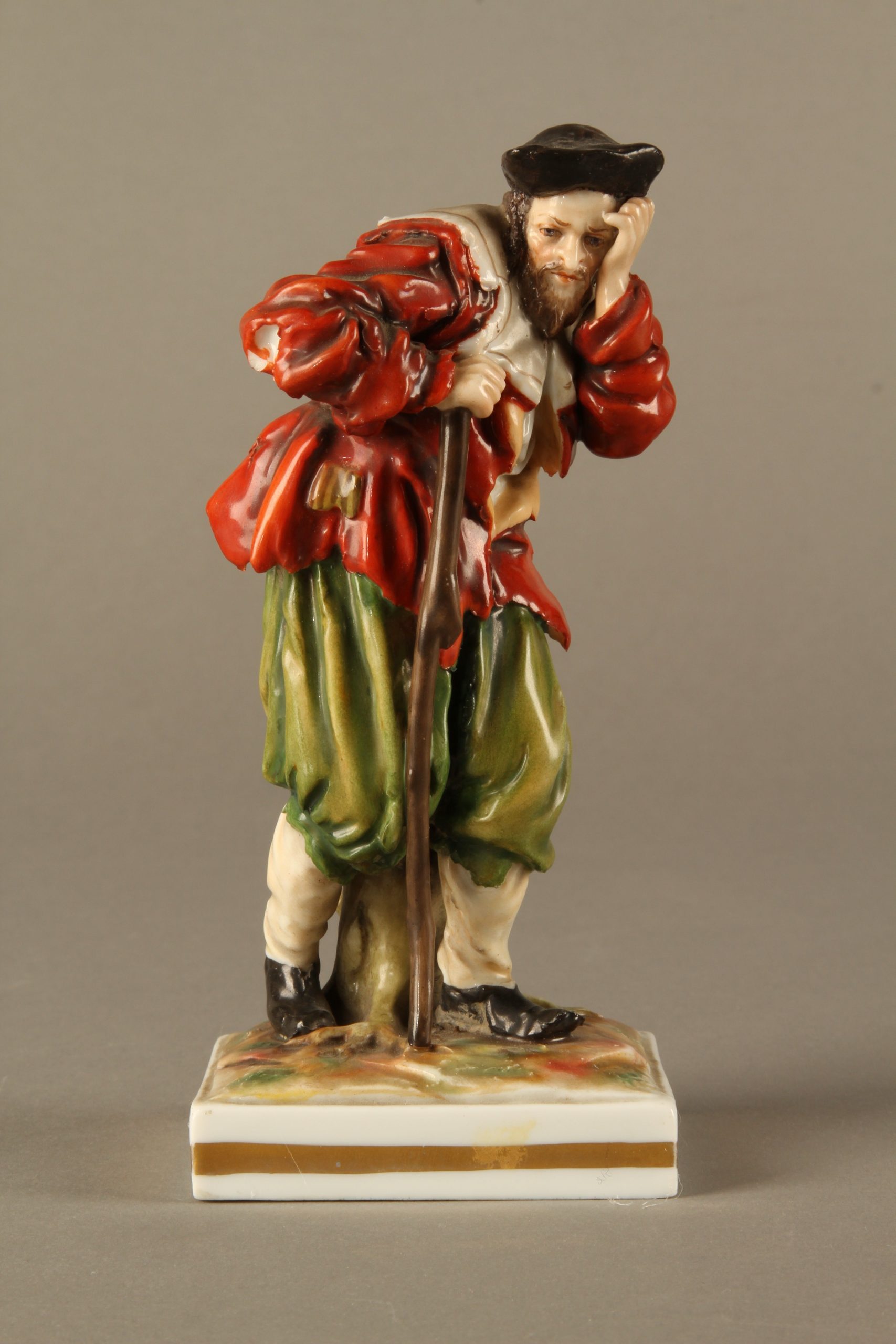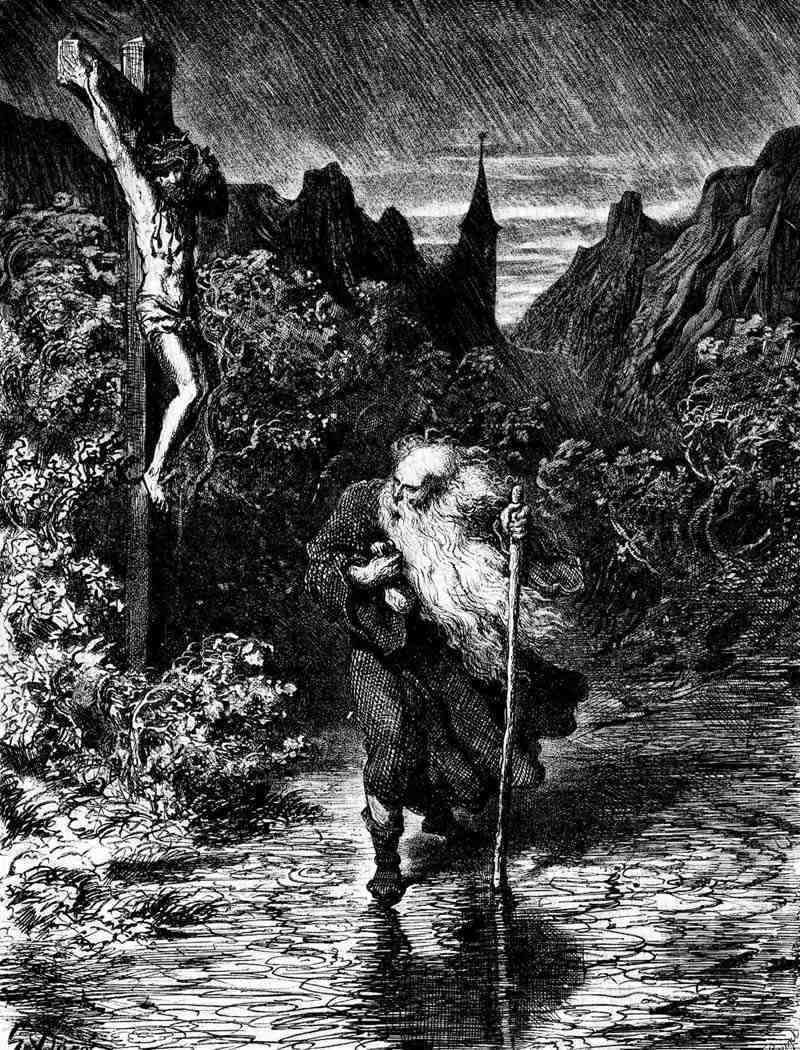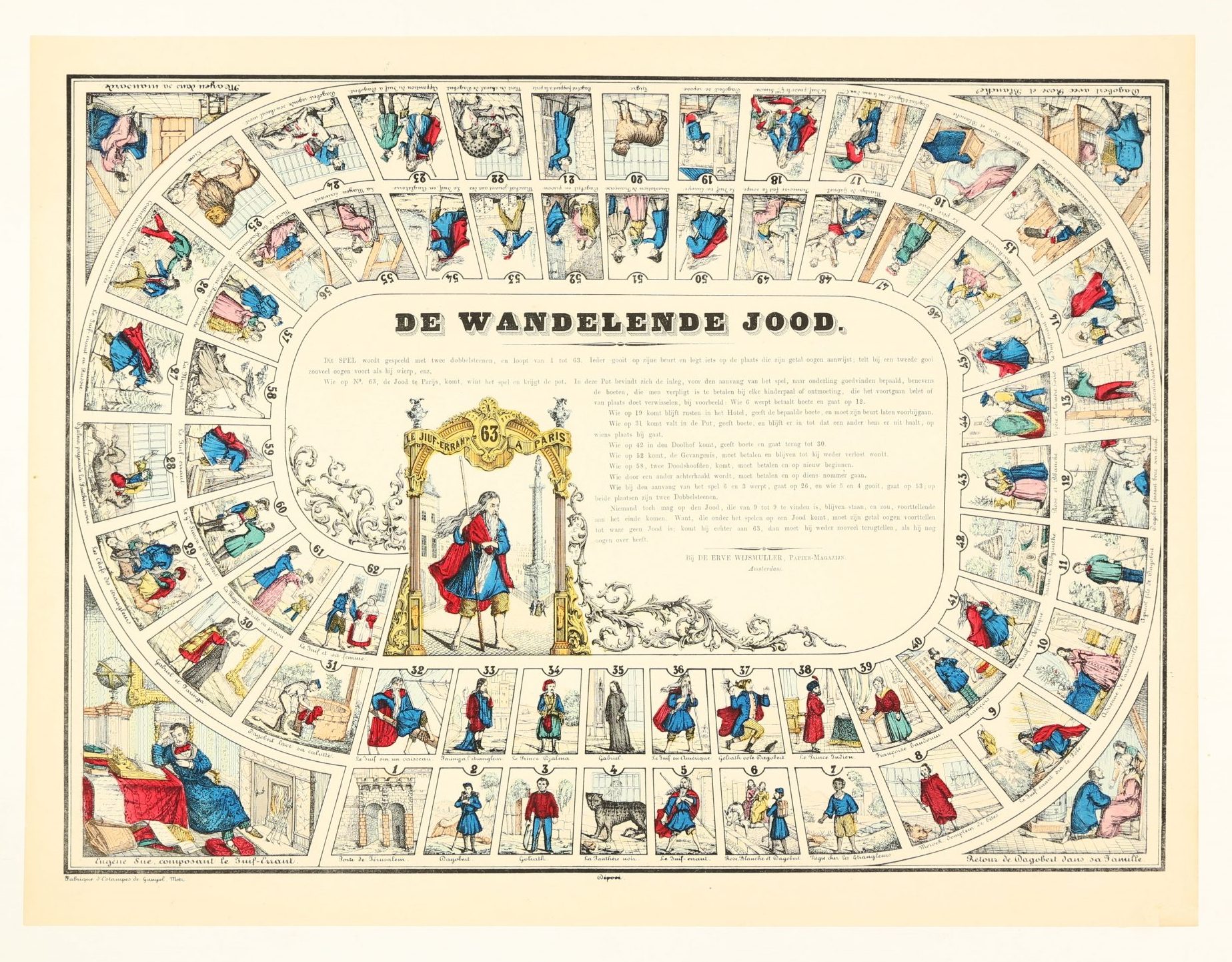The 1753 ‘Jewish Naturalisation Act’ in England led to widespread antisemitism, with public rhetoric depicting Jews as vagabonds and pedlars associated with the Wandering Jew. However, by the nineteenth century, the Wandering Jew had become a symbol for wider intellectual and emotional suffering, for example in Childe Harold’s Pilgrimage (1812-18) by Lord Byron (1788-1824, England) and Queen Mab (1813) by Percy Shelley (1792-1822, England). In contradictory ways, the Wandering Jew became a popular motif for European writers and artists in this period, who portrayed him as a symbol of Jewish threat or universalised him as a Romantic hero representing melancholic wanderings. He becomes associated with Satan in the gothic novel The Monk (1796) by Matthew Lewis (1775-1818, England), and in The Flying Dutchman (1843) by Richard Wagner(1813-1883, Germany).


Eugène Sue’s (1804- 1857, France) serialised novel Le Juif Errant (1884) popularised the legend of the Wandering Jew as a way to introduce exotic ‘local colour’ into society. He is imagined alongside his sister, the figure of Herodias (known in the Gospels for playing a major role in the beheading of John the Baptist with her daughter, Salome). The popularity of the novel inspired Gustave Doré (1832-1883, France) to produce his now ubiquitous illustrations,‘La Légende du Juif errant’ (1856). An operatic adaptation (1852) by Jewish composter Fromental Halévy (1799-1862, France) introduces ‘Ashvérus’ in 12th-century Amsterdam.
